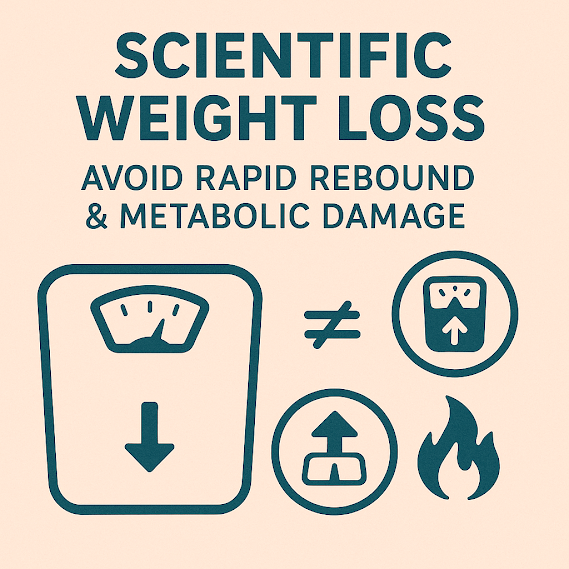Scientific Weight Loss: How to Create a Personalized Exercise Plan
A step-by-step guide and template covering different fitness levels and fat-loss goals, prioritizing safety and effectiveness:
I. Core Principles of Scientific Exercise
- Combine Resistance + Cardio
- Resistance training preserves muscle (maintains metabolism), while cardio burns fat.
- Harvard study: Resistance + cardio is 35% more effective for fat loss than single-modality workouts.
- Progressive Overload
- Beginners start with low intensity to avoid joint strain (e.g., bodyweight squats → dumbbells → barbells).
- Customization
- Adjust exercise types and intensity based on fitness level, body fat %, and schedule.
II. Phase-Based Exercise Plan Template
Phase 1: Beginner Adaptation (Weeks 0-4)
Goal: Build exercise habits, activate full-body muscles
Frequency: 3-4 days/week (rest days in between)
Plan:
- Resistance Training (20 minutes):
- Bodyweight squats: 3 sets × 12 reps
- Knee push-ups: 3 sets × 10 reps
- Plank: 30 seconds × 3 sets
- Cardio Training (20 minutes):
- Brisk walking/elliptical (50-60% max heart rate)
Rest: 60 seconds between sets; ≥48 hours between training days
- Brisk walking/elliptical (50-60% max heart rate)
Phase 2: Advanced Fat-Burning (Weeks 5-12)
Goal: Boost metabolism, break plateaus
Frequency: 4-5 days/week (3 resistance + 2 cardio days)
Plan:
- Resistance Training (30 minutes, split routine):
- Day 1 (Lower Body): Dumbbell squats 4×10 + Bulgarian split squats 3×8/side
- Day 2 (Upper Body): Dumbbell bench press 4×10 + dumbbell rows 3×12
- Day 3 (Core): Side plank 45s×3 + dead bug 3×15
- Cardio Training (30 minutes):
- Jogging/swimming (60-70% max heart rate)
- Weekly HIIT: 30s sprint + 1min walk × 8 rounds
Phase 3: Long-Term Maintenance (Week 12+)
Goal: Sustain metabolism, prevent rebound
Frequency: 3-4 days/week (flexible scheduling)
Plan:
- Resistance Training (30-40 minutes):
- Compound lifts (deadlifts, pull-ups, overhead press)
- Increase weight or reduce rest time (intensity focus)
- Cardio Training:
- 1-2 fun sessions/week (dancing, cycling, sports)
- NEAT:
- Walk ≥8,000 steps/day; stand 5 minutes/hour
III. Key Guidelines
- Intensity Standards
- Resistance: Use weights causing failure at 8-15 reps/set (e.g., unable to complete 12th rep with proper form).
- Cardio: Max heart rate = 220 - age; fat-burning zone = 60-70% (e.g., 114-133 bpm at age 30).
- Injury Prevention
- Warm-up: Dynamic stretches (high knees, lunges with twists).
- Cool-down: Static stretches (30s/muscle group).
- Modify exercises for joint pain (e.g., cycling instead of running for knee issues).
- Recovery
- Rest 1-2 days/week (yoga, light walks).
- Reduce intensity if sleep-deprived (high cortisol impedes fat loss).
IV. Behavioral Science Tips
- SMART Goals
- Example: “Complete 3 sets of standard push-ups and reduce body fat by 3% in 8 weeks.”
- Habit Stacking
- Link exercise to daily routines (e.g., “change into workout clothes immediately after work”).
- Progress Tracking
- Record measurements/strength gains (0.5kg muscle gain ≈ +25kcal/day burned).
V. Adjustments for Specific Groups
| High BMI (≥28) | Avoid jumping; use swimming, elliptical, seated exercises |
| Low BMI toning (<24) | Increase resistance frequency (4-5 days/week); shorten rest intervals |
| Busy professionals | Split workouts (15min AM/PM resistance + commute walking for cardio) |
VI. Common Mistakes
- ✘ Cardio-only routines: Muscle loss → metabolic slowdown → rebound.
- ✘ Fasted high-intensity workouts: Risk hypoglycemia and muscle breakdown.
- ✘ Skipping warm-ups: ↑ Injury risk.
VII. Sample Weekly Plan
| Resistance (Lower) | Resistance (Upper) | Resistance (Core) | HIIT 20min |
| Brisk walk 30min | Swim 30min | Yoga/stretching | Free activity/rest |
Evidence:
- Journal of Sports Medicine: 150min/week moderate exercise reduces visceral fat by 7-10%.
- ACSM: Resistance training ↑ resting metabolism by 5-9% for 48 hours post-workout.
Execution Tip: Start small (even 10min/day), then refine. Adjust every 4 weeks based on soreness, fatigue, and body fat changes.










Comments
Post a Comment